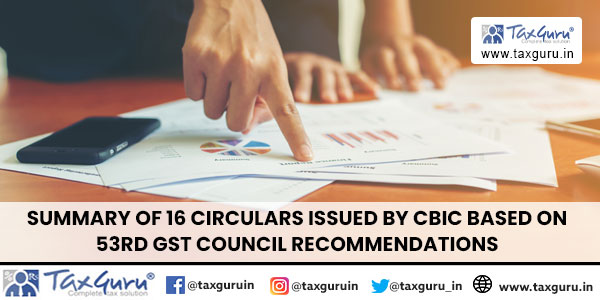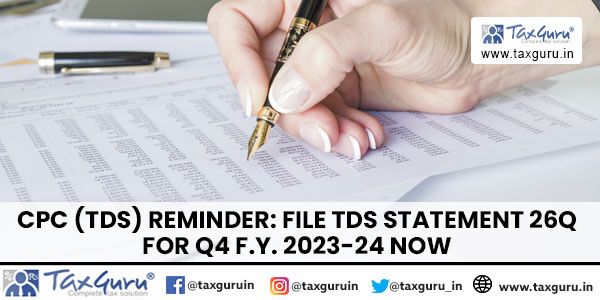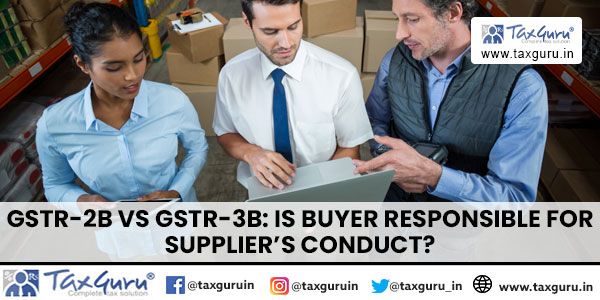Ever heard of SME IPO’s or how they work? They are surely not that difficult as it seems. This article will give you a basic understanding of what really is the concept of SME IPO, emergence of the SME exchanges in India along with the listing criterias and procedure.
Bur before digging deep, let us first understand what are small and medium enterprises (SME’s) ?
In India, MSME’s are presently defined on the basis of investment in plant and machinery /equipment and annual turnover. W.e.f. July 01, 2020, the Government has introduced the new criteria for classification of micro, small and medium enterprises which is as below:
| Classification of Micro, Small and Medium Enterprise (MSME) sector | |||
| Composite Criteria
Investment in Plant & Machinery and Annual Turnover |
|||
| Classification | Micro | Small | Medium |
| Manufacturing and Service Sector Enterprise | Investment in Plant & Machinery or Equipment upto Rs. 1 crore
and Annual Turnover does not exceed Rs. 5 crores |
Investment in Plant & Machinery or Equipment upto Rs. 10 crores
and Annual Turnover does not exceed Rs. 50 crores |
Investment in Plant & Machinery or Equipment upto Rs. 50 crores
and Annual Turnover does not exceed Rs. 250 crores |
*Source from Ministry of MSME

SME sector is the second largest employment generating sector of India after agriculture sector. It also contributes significantly to innovation, exports and inclusive growth of the economy. They are the backbone of the socio-economic development of our Country. Around 30 per cent of the GDP in Indian economy is contributed by the MSME. But there are various challenges faced by the SME sector which hampers its growth. Financing remains one of the major problems faced by the sector that prevents this sector from well-functioning. SMEs are facing constraints in accessing credit facilities from various financial institutions. The cumbersome regulatory practices and loopholes further hinders the prospects of SME’s. Also, the credit which they are getting is inadequate and is of high cost.
To overcome this problem and in order to provide SME’s, a platform for raising the needed capital and providing them more financing avenues, the Prime Minister’s Task Force (Jan. 2010) had recommended the setting up of a dedicated Stock Exchange/ Platform for SMEs where IPO’s of small and medium companies can be launched. As per SEBI (Issue of Capital and Disclosure Requirements) Regulations 2018, “SME Exchange” means a trading platform of a recognised stock exchange having nationwide trading terminals permitted by the Board to list the specified securities issued in accordance with Chapter IX and includes a stock exchange granted recognition for this purpose but does not include the Main Board. Further to this, the SEBI made regulations for the governance of SME Exchange. To this initiative, in 2012, the Bombay Stock Exchange and the National Stock Exchange established separate exchange platforms for SMEs, called BSE SME and NSE EMERGE respectively.
Earlier to this, the Over-The-Counter Exchange of India (OTCEI) was established in 1990 with the same purpose. It was the India’s first exchange for small companies as well as the first screen-based nationwide stock exchange in India. However, it could not get the much-needed support at that time and hence the same was de-recognised by the SEBI in 2015.
At present, there are only two SME Exchanges in India i.e. BSE SME (BSE) and EMERGE (NSE) and both have their own eligibility criteria for SME listing in addition to the SEBI guidelines provided for the listing.
Criteria for listing on BSE SME Platform and NSE EMERGE Platform
| Parameter | BSE SME Listing Criterion | NSE EMERGE Listing Criterion |
| Incorporation | The Issuer should be a company incorporated under the Companies Act 1956 / 2013 in India | The Issuer should be a company incorporated under the Companies Act 1956 / 2013 in India |
| Post Issue Paid up Capital | The post issue paid up capital of the company (face value) shall not be more than Rs. 25 Crores | The post issue paid up capital of the company (face value) shall not be more than Rs. 25 Crores. |
| Net worth | Positive Networth | Positive Networth |
| Tangible Asset | Net Tangible Assets should be Rs 1.5 Crore | No such requirement |
| Track Record | The Company or the Partnership/Proprietorship/LLP Firm or the Firm which have been converted into the Company should have combined track record of at least 3 years
OR In case it has not completed its operation for three years then the Company/Partnership/Proprietorship /LLP should have been funded by Banks or Financial Institutions or Central or state Government or the Group Company should be listed for at least two years either on the main board or SME board of the Exchange. The Company or the Firm or the Firm which have been converted into the Company should have combined positive cash accruals (earnings before depreciation and tax)in any of the year out of last three years and its net worth should be positive.
|
♦ Track record of atleast three years of either:
i. the applicant seeking listing; or ii. the Promoters****/ Promoting Company, incorporated in or outside India or iii. Proprietary / Partnership firm and subsequently converted into a Company (not in existence as a Company for three years) and approaches the Exchange for listing. ****Promoters mean one or more persons with minimum 3 years of experience in the same line of business and shall be holding at least 20% of the post issue equity share capital individually or severally ♦ The Company/entity should have operating profit (earnings before interest, depreciation and tax) from operations for atleast any 2 out of 3 financial years preceding the application and its net worth should be positive. |
| Other requirements/ listing conditions | 1. It is mandatory for the Company to have a website.
2. It is mandatory for the Company to facilitate trading in demat securities and enter into an agreement with both the Depositories. 3. There should not be any change in the promoters of the Company in preceding one year from date of filing the application to BSE for listing under SME segment.
|
1. The applicant Company has not been referred to erstwhile Board for Industrial and Financial Reconstruction (BIFR) or no proceedings have been admitted under Insolvency and Bankruptcy Code against the issuer and Promoting Companies.
2. The Company has not received any winding up petition admitted by a NCLT / Court. 3. No material regulatory or disciplinary action by a Stock Exchange or regulatory authority in the past three years against the applicant Company. |
| Disclosures | 1. The Company has not been referred to the Board for Industrial and Financial Reconstruction (BIFR).
2. There is no winding up petition against the company, which has been admitted by the Court or a liquidator has not been appointed. |
The following matters should be disclosed in the offer document:
1. Any material regulatory or disciplinary action by a Stock Exchange or regulatory authority in the past one year in respect of Promoters /Promoting Company(ies), Group Companies, Companies promoted by the Promoters / Promoting Company(ies) of the applicant Company 2. Defaults in respect of payment of interest and/or principal to the debenture /bond/fixed deposit holders, banks, FIs by the applicant, Promoters/Promoting Company(ies), Group Companies, Companies promoted by the Promoters / Promoting Company(ies) during the past three years. 3. The applicant, Promoters/ Promoting Company(ies), Group Companies, Companies promoted by the Promoters / Promoting Company(ies) litigation record, the nature of litigation, and status of litigation. 4. In respect of the track record of the directors, the status of criminal cases filed or nature of the investigation being undertaken with regard to alleged commission of any offence by any of its directors and its effect on the business of the company, where all or any of the directors of issuer have or has been charge-sheeted with serious crimes like murder, rape, forgery, economic offences. |
Some common guidelines for listing on BSE SME Platform and NSE EMERGE Platform
1. The minimum application and trading lot size shall not be less than Rs. 1,00,000/-
2. The minimum number of prospective allottees shall be atleast 50.
3. The issues shall be 100% underwritten and Merchant Bankers shall underwrite 15% in their own account.
4. Offer Document [Draft Prospectus/Draft Red Herring Prospectus (DRHP)] is not subject to observation by SEBI. The SEBI has delegated the powers to Exchange with respect to approving the Draft Prospectus/Draft Red Hearing Prospectus.
5. Market making mandatory through exchange registered market makers for a minimum period of 3 years.
6. IPO Grading is not compulsory for listing on SME Exchange.
Procedure for listing on the SME exchange
1. The issuer shall appoint one or more merchant bankers, which are registered with the Board, as lead manager(s) to the issue.
2. The issuer shall, in consultation with the lead manager(s), appoint various other intermediaries involved in the process of listing such as RTA’s, Bankers to the issue, Depositories, advertising agencies, printers etc.
3. The merchant banker shall then conduct due diligence regarding the Company i.e checking the documentation including all the financial documents, material contracts, Government approvals, Promoter details etc. This step shall also include planning the IPO structure, share issuances, and financial requirements.
4. On completion of due diligence, the merchant banker shall prepare and submit a Draft Prospectus/Draft Red Herring Prospectus (DRHP) with the concerned Exchange as well as SEBI as per the prescribed requirements. The offer document shall contain all material disclosures which are true and adequate to enable the applicants to take an informed investment decision.
5. The Stock Exchange shall verify the documents and upon being satisfied, shall processes the same. A visit to the company’s site shall also be undertaken by the Stock Exchange official. The Promoters shall be called for an interview with the Listing Advisory Committee.
6. The Stock Exchange shall issue In Principle Approval on the recommendation of the Committee, provided all the requirements are compiled by the issuer company.
7. After receiving In Principle Approval from the Exchange, the Merchant Banker shall file Red Herring Prospectus (RHP)/Prospectus with the ROC indicating the opening and closing date of the issue.
8. Once approval is received from the ROC, the Company will intimate the Stock Exchange about the opening date of the issue along with submitting required documents.
9. IPO will open and close for the public as per the schedule for allotment.
10. After the closure of IPO, the Company submits the documents as per the checklist to the Exchange for finalization of the basis of allotment.
11. Once the allotment is over, the Company shall file a listing application with the Stock Exchange and obtain listing approval for the securities issued.
12. After listing approval, Corporate Action needs to be done with NSDL and CDSL for dematerialisation of the shares credited.
13. The issuer shall then seek trading approval from the Exchange by filing the trading application.
Today there are 300+ companies listed on BSE SME Exchange and 200+ companies listed on NSE Emerge. Listing on SME platforms is a simple process with less regulatory requirements and has several advantages to offer. The establishments of these platforms have given greater visibility and exposure to the small and medium enterprises which would not have happened if they were not listed on the exchange. This in turn improves credibility of a company with various stakeholders it works with. With IPO’s launched on the SME platforms, it opens up a huge market for the issuer companies for raising capital in the form of equity and thereby attracting new investors to the Company. Equity financing further provides growth opportunities like expansion, mergers and acquisitions etc and also enables liquidity for shareholder. One of the biggest advantages of being listed on SME platforms is migration to the main board of BSE and NSE from the SME platforms after they have crossed the prescribed threshold.
Reference link for BSE SME Exchange and NSE EMERGE is given below:
https://www.bsesme.com/
https://www1.nseindia.com/emerge/index_sme.htm
Disclaimer: This material and the information contained herein are prepared by JMJA & Associates LLP, Practising Company Secretaries (JMJA) is intended to provide general information on a particular subject or subjects and is not an exhaustive treatment of such subject(s). None of JMJA, its associate firms, or its members/employees is, by means of this material, rendering professional advice or services. The information is not intended to be relied upon as the sole basis for any decision which may affect you or your business. Before making any decision or taking any action that might affect your personal finances or business, you should consult a qualified professional adviser. JMJA shall not be responsible for any loss whatsoever sustained by any person who relies on this material.
Please verify these details from NSE/BSE respectively before taking any decision. These conditions are prevalent as on the date of article.



























